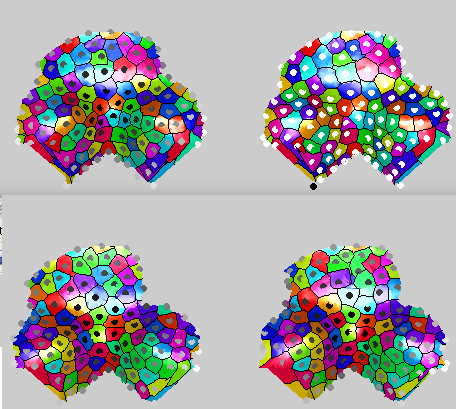Wednesday, February 1st, 2012, 6:03 pm
GMDS for Surface Comparison: Approaching perfect Tests
Over the past two days I have running some more experiments that look at what can be refined for better performance. At some adjustments of the parameters it seems to hit the sweet spot for a couple dozen pairs, but then the errors start creeping in. Basically, pairs belonging to different people do not entail big enough a penalty, even when they are clearly quite different. I am getting closer though, to the extent one can given GMDS as the instrument of choice…
No classification mistakes were made after I had adjusted several parameters appropriately. Having explored high density sampling, I found that it works reasonably well at around 2000 vertices, 20 GMDS operations on each pair, and as many as 30 levels in the multi-scale approach (this does not take long with the C++ implementation). The performance achieved is quite satisfactory and after trying all kinds of masks I ended up with a new type of mask, one which is intentionally asymmetric so as to help GMDS not flip any faces over (around the Y axis, horizontally rather than vertically), thus always comparing like with like.
I have made lots of progress although much of the progress was not documented in a detailed fashion. This was done in order to make improvements more rapid and not too dependent on formality.
There is a lot more room for improvement, so these results are just a glimpse at the sort of level easily attained. Shown are the results from the latest experiments.
FMM-based method ROC curve

GMDS-based method ROC curve

More images and explanations will now follow.
A 20-layer approach before buxfixes

2 pairs after bugfixes

Mismatches after some bugfixes

Correct matches after some bugfixes

A 20-layer coarse correspondence check

Same as above but with smaller mask

Same as above but with further improvements

Currently I am looking at whether or not doubling the number of vertices again will lead to improvements. Previous experiments suggest that at a certain point it might leads to exacerbation.






 Filed under:
Filed under: 
